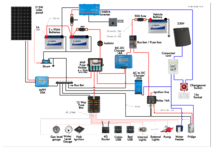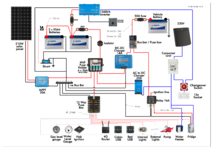- Aug 28, 2019
- 25
- 11
- Funster No
- 63,631
- MH
- Boxer PVC
- Exp
- ages
This is my curent plan for the wiring for my new van conversion. I'd be grateful for any comments particularly:-
Is the chassis ground the right side of the shunt?
Do I need another isolator before the 12 way fuse box?
Anything else?
Many thanks
Nick
Is the chassis ground the right side of the shunt?
Do I need another isolator before the 12 way fuse box?
Anything else?
Many thanks
Nick




